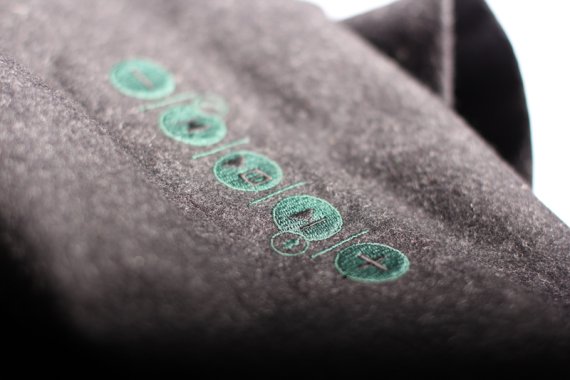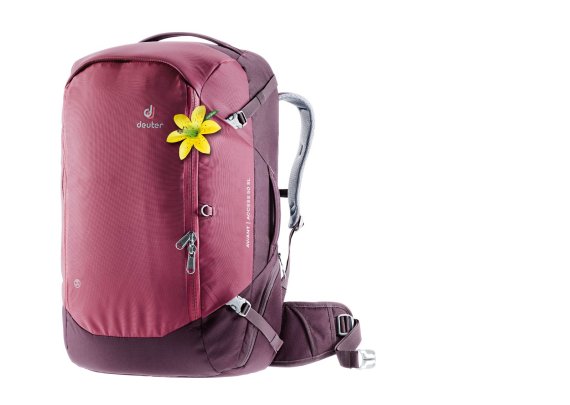
Innovations have been driving the sports market for many years. Whether it's new materials, more sustainable production processes or completely new sports equipment - without innovations, the sports retail trade would have little to tell and the customer would have no reason to invest in new products.
But innovations rarely emerge as an ingenious achievement of individuals in a quiet chamber. According to studies, teamwork brings the best results, especially when team partners have very different strengths and skills.
The cooperation between different industries is therefore particularly promising, as they share their specialist knowledge in completely new products. Cross-Technology or the cross-sector networking is a future trend.
The telephone becomes the personal command center, the clock the data measuring device, the glasses the navigation aid. What was unimaginable a few years ago is now part of everyday life. All these innovations would hardly have come about if the developers had always looked only at their own guild. But how do such different partners come together?
"Each industry focuses on specific topics and moves in its own cocoon," says Johannes Becker, Director Competence Center Schreiner PrinTronics at Schreiner Group.
As a manufacturer of RFID functional labels, Schreiner Group is active in the automotive, pharmaceutical and medical technology.
"We wanted to see if there were any overlaps with the sports industry," says Becker. There was great interest, but the road to common products is still long. "Such processes take years, we know that from other industries."
Even if innovations are technically possible, this alone does not convince any customer. There are many obstacles: The integration of electronics requires a target group with an affinity for technology as well as salespeople. Above all, the product must offer real added value and be more than just a gadget. To be honest, who wants to have another device that needs to be charged?
"We really need convincing applications and solutions so that the customer can take advantage of them," says Becker. The company has already developed one of these: A T-shirt with integrated RFID payment function within a sports stadium.
Mammut is now also integrating NFC chips into clothing and accessories lines, as is backpack specialist Deuter. Christina Völlinger, Head of Marketing at Deuter: "Digitalization offers the industry numerous opportunities. Thanks to digital technologies, for example, in our new AViANT Travel series with integrated NFC chips, we offer our customers and sports retailers real added value."

In combination with the smartphone, completely new possibilities for the integration of electronics in clothing are emerging. Textile sensors, for example, measure temperatures, humidity, pressure and can be played out and analyzed via the smartphone.
"We have completely different prerequisites than before," explains Andreas Röpert of Interactive Wear, a company that specializes in the development of smart textiles and wearable electronics.
The range of applications extends from textiles to mobile phones. "Today, we have an infrastructure of mobile devices and services at our disposal, the development focus is currently in the area of applications, for example to develop algorithms for complex data patterns with the help of artificial intelligence.
"The best-known example of how long it takes from an idea to a marketable product is Nike," explains Andreas Röpert. "In 1989 Nike presented a sneaker that laced itself in the film 'Back to the Future II'. In 2011 a limited edition was released and in February 2019 the current version "Nike Adapt BB" was released.
Strictly speaking, the industry has been working for many years on technological innovations in the field of electronics. In the early 2000s, O'Neill released a jacket with a textile keyboard for the MP3 player on the sleeve and sold it successfully for several years. The Solar Jacket from Zegna Sport - whose solar cells can charge electronic devices at the collar - was also launched on the market several years ago.
Smart textiles are not yet a mass market, but instead of large quantities, they certainly score points in the area of marketing. "In our experience, such projects are particularly worthwhile for marketing campaigns and for opening up new target groups," Röpert continues. "The media interest in such products is enormous. As a clothing brand, you reach completely different target groups than with the classic channels."
In the meantime, various institutes have devoted themselves to the topic of X technology and are actively bringing together different industries, such as Bayern Innovativ or the German Institute for Textile and Fiber Research Denkendorf.
X-Technology is not limited to electronics and clothing. Efforts to improve sustainability in the apparel industry are bringing far more unusual collaborations to light. For example, a group of Portuguese project partners has just developed a dyeing and functionalization process for clothing based on fungal and plant extracts as well as enzymes.
Partners in the project include the Centre for Nanotechnology and Smart Materials (CeNTI), the textile company Tintex and the spice and herb producer Ervital.

 Sports BusinessSki Mountaineering Goes Olympic: What Milano-Cortina 2026 Means
Sports BusinessSki Mountaineering Goes Olympic: What Milano-Cortina 2026 Means
- ISPO awards
- Mountain sports
- Bike
- Design
- Retail
- Fitness
- Health
- ISPO Job Market
- ISPO Munich
- ISPO Shanghai
- Running
- Brands
- Sustainability
- Olympia
- OutDoor
- Promotion
- Sports Business
- ISPO Textrends
- Triathlon
- Water sports
- Winter sports
- eSports
- SportsTech
- OutDoor by ISPO
- Heroes
- Transformation
- Sport Fashion
- Urban Culture
- Challenges of a CEO
- Trade fairs
- Sports
- Find the Balance
- Product reviews
- Newsletter Exclusive Area
- Magazine





